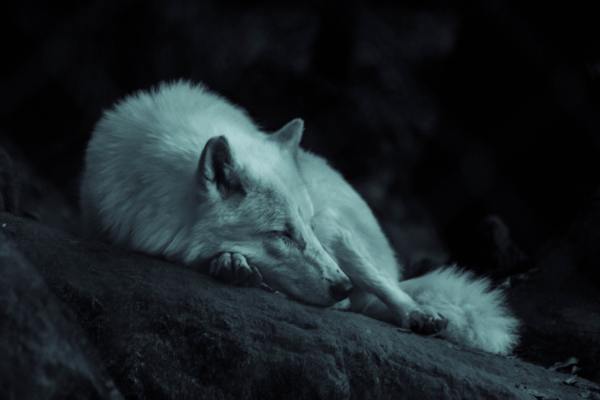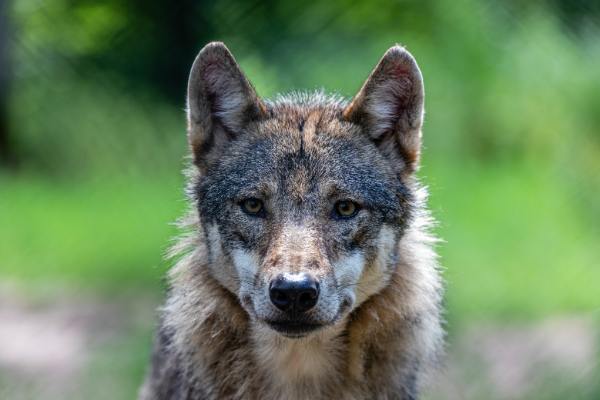A coywolf is a canid hybrid made up of coyotes, gray wolves, and eastern wolves. According to genomic studies, coyote mixtures are present in all gray wolf populations in North America, with the highest concentrations found in Ontario, Quebec, and Atlantic Canada and the lowest concentrations in Alaska. To learn everything there is to know about this hybrid, keep reading.
What Is The Coywolf
The unlikely mating and evolution of two species that share common geographic habitats and behavioral traits led to the development of the coywolf.
Coyotes and wolves are frequently viewed as aggressive rivals in the wild. Despite the recorded conflicts between the canine species’ extreme intolerance, coyotes and wolves managed to reproduce.
Additionally, there are canine domestication remnants in the species. Though it seems strange, the two things do go together.
It can be very challenging to distinguish between a coyote, wolf, and coywolf when they are side by side.
There are a few variations, mainly in size. Greater than a coyote and smaller than a wolf, the coywolf is a hybrid animal. The coywolf and coyote are similar animals, except for size.
The animal has recently been seen in nearby neighborhoods and within city limits. It is important to keep in mind that these are wild animals.
While they are gorgeous, keep your distance, and be sure to contact your local humane wildlife control.
Where Are Coywolves Found
The coywolf is still a fairly uncommon sighting when discussing wildlife in communities. Eastern Canada and the United States are home to the rare species.S., but it stays largely in the forests, far from human settlement.
They are more likely to be observed by residents of their communities than a coywolf because their close relative, the coyote, has spent more time becoming accustomed to urban settings.
Coywolves prefer to be in the woods, but when it is advantageous they will enter neighborhoods. Like other animal species, the coywolf travels to areas with a lot of food sources.

Coywolves can also be seen rummaging through trash, much like their coyote relatives. You are more likely than others to see this fascinating species if you live close to a wooded area.
As wild animals, coywolves are still likely to avoid humans, so you should heed the warning and keep your distance at all times.
Animals are constantly looking for food and shelter, though occasionally human communities can meet these needs. Therefore, even when the wildlife is as distinctive as the coywolf, encountering wildlife sightings in developed areas is not uncommon.
The species is unpredictable and could be dangerous if approached because of its nature. Domesticated animals like cats and dogs may also face danger from the coywolf.
If you see a coywolf in your neighborhood, bring your pets inside and call a professional and humane control service.
Are They In Illinois
In the scientific community, the definition of a coywolf is still debatable. It describes what is more frequently referred to as an “eastern coyote,” which is primarily a coyote with a small amount of wolf gene influence.
The term “coywolf” is inaccurate because it implies a wolf-and-coyote hybrid, which it is not. There is no proof that eastern coyotes live in Illinois, and it’s unlikely that people could tell them apart from the typical western coyote.
Contrary to some beliefs, the truth is that coyote weights and coat conditions range widely, and there is little to no difference in size between coyotes in the east and west. In Illinois, you can see western coyotes.
Is Coywolf An Appropriate Term
On this, Webb was unambiguous.
The term “coywolf” intentionally misleads the public. There are coyotes in the east. We acknowledge that some hybridization took place, but they are not wolves.
It was determined that the majority of the samples from genetic research in Maine had eastern coyote ancestry, but a small proportion also had wolf ancestry.
Both species interbred at some point, and the genetic signature of that interbreeding is present, claims Webb. One coyote had an 89 percent wolf ancestry.
The animal in question, a female weighing 27 pounds, was oddly one of the study’s smaller animals. It didn’t look at all like a wolf.
The term is not entirely accurate, but Rutledge was more cautious in his remarks. Coyote and wolf ancestry can be found in the eastern coyote, according to the expert.
Webb’s sentiment, which has been echoed by other wildlife biologists and managers, probably has some root in the persuasion principle.
Some people might find the idea of a wolf in the neighborhood repugnant. More evil intent is also met with resistance.
According to some, the Endangered Species Act might provide this newcomer with more protection if it is classified as a distinct species with a “wolf” in its name.
The Coyote Wolf Mix And Genetics
It has never been documented that wolves or dogs and eastern coyotes breed. Even though they are sufficiently similar biologically to breed, the coyote, wolf, and dog are three species that do not want to mate.
Their DNA reveals that coyotes crossed paths with wolves around 100 years ago and with dogs about 50 years ago.
Why do they then reproduce? The Great Lakes region’s wolf population was so low a century ago that some females were forced to mate with coyotes because they couldn’t find a wolf companion.
Eastern coyotes can now locate a coyote mate very quickly. Its population is still thriving in its new woodland home, and it appears to prefer killing dogs to breeding with them. Instead of its last-ditch ally, the wolf is now the coyote’s deadliest foe.
Final Thoughts
The term “coywolf” is occasionally used in colloquial speech. This nickname has some truth to it, as other slang names do, but it also has a lot of false information attached to it.
The eastern coyote, a fascinating new hybrid coyote that is currently undergoing an amazing evolutionary change, is what we currently have.
To distinguish it, refer to it as a “subspecies” or by its scientific name, Canis latrans var. It’s one thing to refer to it as a Coywolf, but quite another to know exactly what it is!

